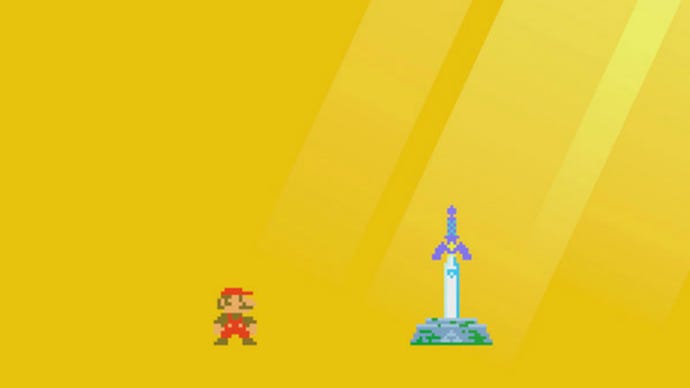Nintendo Needs to Actually Support Its Games For Longer Than a Year
Smash benefits from healthy ongoing support, but where is the love for the rest of Nintendo's games?
This article first appeared on USgamer, a partner publication of VG247. Some content, such as this article, has been migrated to VG247 for posterity after USgamer's closure - but it has not been edited or further vetted by the VG247 team.
It took entirely too long for Super Mario Maker 2 to have a proper update. It was the best-selling game in Japan and North America on its release, and a successful launch is something you want to build on, to increase the momentum. Super Mario Maker 2 should've been abounding with new course parts, themes, and options, but Nintendo is behind the times when it comes to ongoing game updates.
Today, Nintendo announced the second major update for Super Mario Maker 2 since launch. Patch 1.1.0, released in October, added the option to play with friends in multiplayer. The announced patch, coming on December 5, includes the new Master Sword power-up, which lets players turn into Link from the original The Legend of Zelda. It offers a whole new way to play, with shield-blocking, arrow-shooting, and bomb-throwing all coming to Super Mario Bros. courses. There's also new course parts and enemies in this update, alongside the online-based Ninja Speedruns.
All told, that's three months between one update and two months between the second. That's not great for a game that relies so strongly on its community. The Mario Maker 2 community feels subdued compared to that of the first game, and I think part of that is the change with how we connect with games. The fans needs to see new things coming and have an idea of what's going to be on the horizon to remain engaged. The Master Sword power-up offers so many possibilities for the future, but the community has no idea if or when Nintendo will follow up on it.
This is an ongoing problem within Nintendo. Mario Kart 8 Deluxe was a launch title and remains the best-selling Switch game with 19.01 million copies sold. Nintendo has released a scant four updates for the game, all of which are balance updates outside of an Amiibo unlocked Pikmin costume. Given that Mario Kart 8 itself opened the door to a "Smash Kart" with its DLC updates two years prior to the Switch release, it's odd that Nintendo never released another character, course, or kart.
ARMS likewise saw its support dry up after just a year. After launching on June 16, 2017, ARMS saw its last update on January 11, 2018—not even a full year later. Those updates added five new fighters, 12 new arms, and four new stages but the ARMS fandom, such as it is, remains hungry for more.
Splatoon 2, by contrast, saw a host of different patches, four major content updates, and an entire DLC expansion. But Nintendo closed up shop on Splatoon 2 this past July, with the October update being limited to bug fixes.
That leaves Super Smash Bros Ultimate, which is the one game that makes it seem as if Nintendo might be learning from its competition. To date it has enjoyed 13 updates, including new modes, new spirits, new Mii Fighter costumes, and four new fighters. We're almost a year out from Smash Ultimate's release, and the last fighter is scheduled to release by February 2020. Nintendo has actually promised more fighters for Smash Ultimate beyond that though, so perhaps Smash will firmly be the exception.

It's not that Nintendo can't update these titles—they just don't. Look at the mobile side of things. Animal Crossing: Pocket Camp is two years old, about the same as many Switch launch games. It recently reached update 3.0.0, which is actually the 51st update to the game. Fire Emblem Heroes gets a brand-new update every single month. Mario Kart Tour has already seen the addition of 18 racers and 32 karts. Sure, not all of those games are developed directly by Nintendo, but the company has expertise to draw upon. Do I want Nintendo to be as cutthroat as some of its mobile offerings? No, but Nintendo should put some thought into updating its games and services in the long-term.
There's space a desire for more characters and stages for Mario Kart 8 Deluxe, Super Mario Odyssey, Splatoon 2, and ARMS. Course creators want more bits and bobs for Super Mario Maker 2, and they want to know Nintendo has a long-term update plan.
Being good in one area isn't the best excuse to not deliver in another. Nintendo doesn't drop the prices of its games because it wants the long tail of sales, but it doesn't support those games enough. Nintendo could and should think of ways to continue supporting those titles, or their future iterations. I think it's fully up to the task, if it simply tries.


